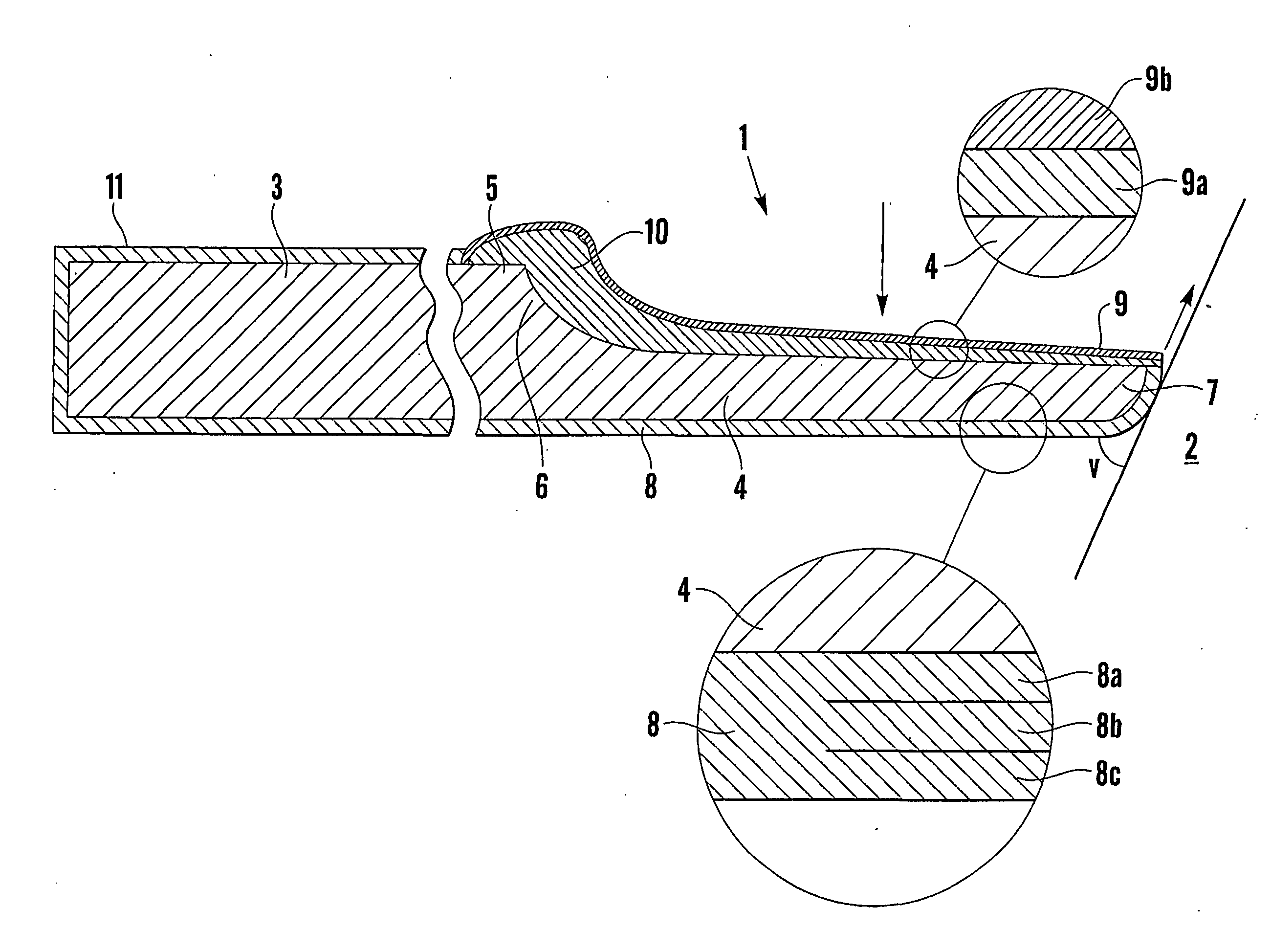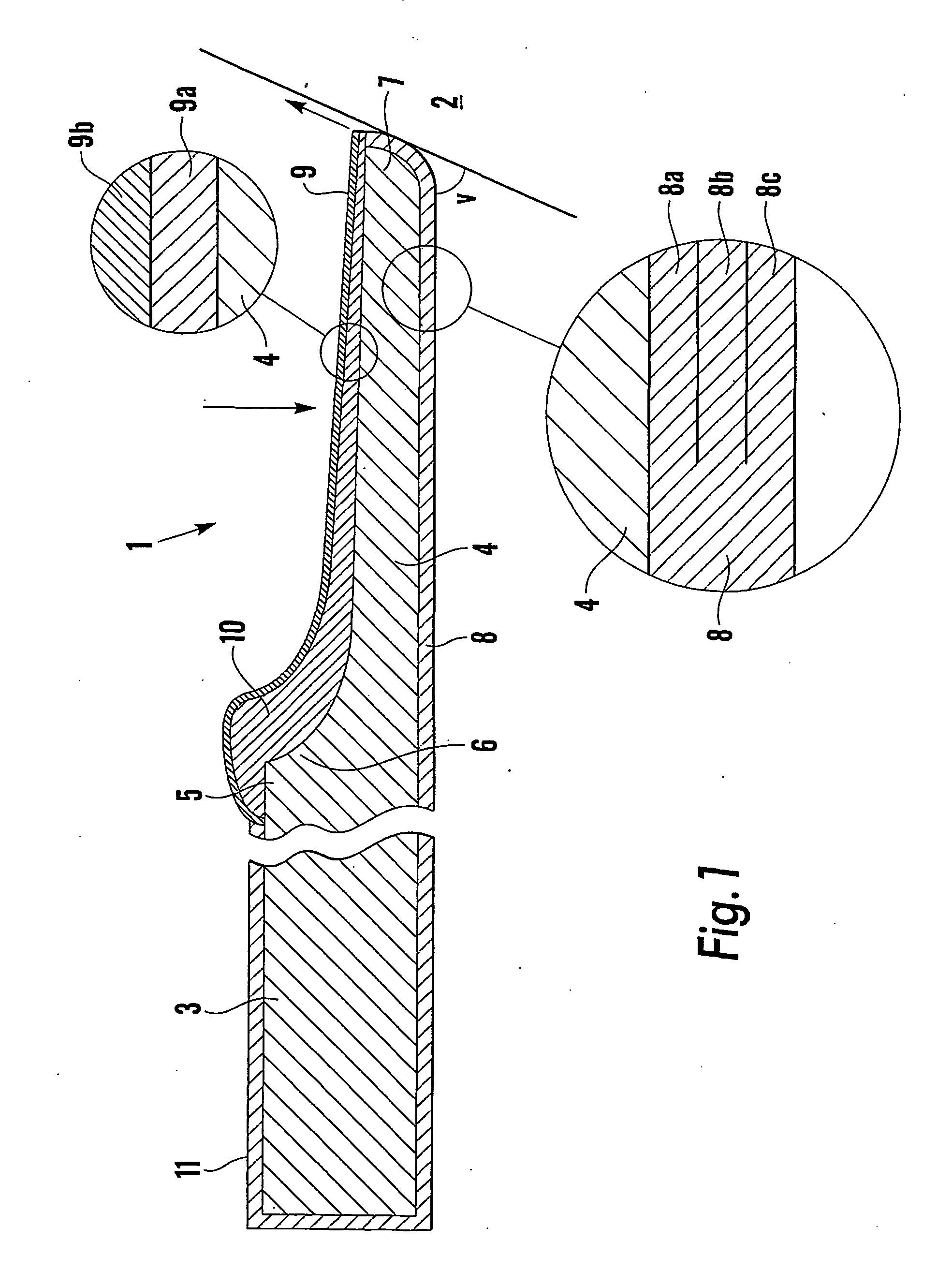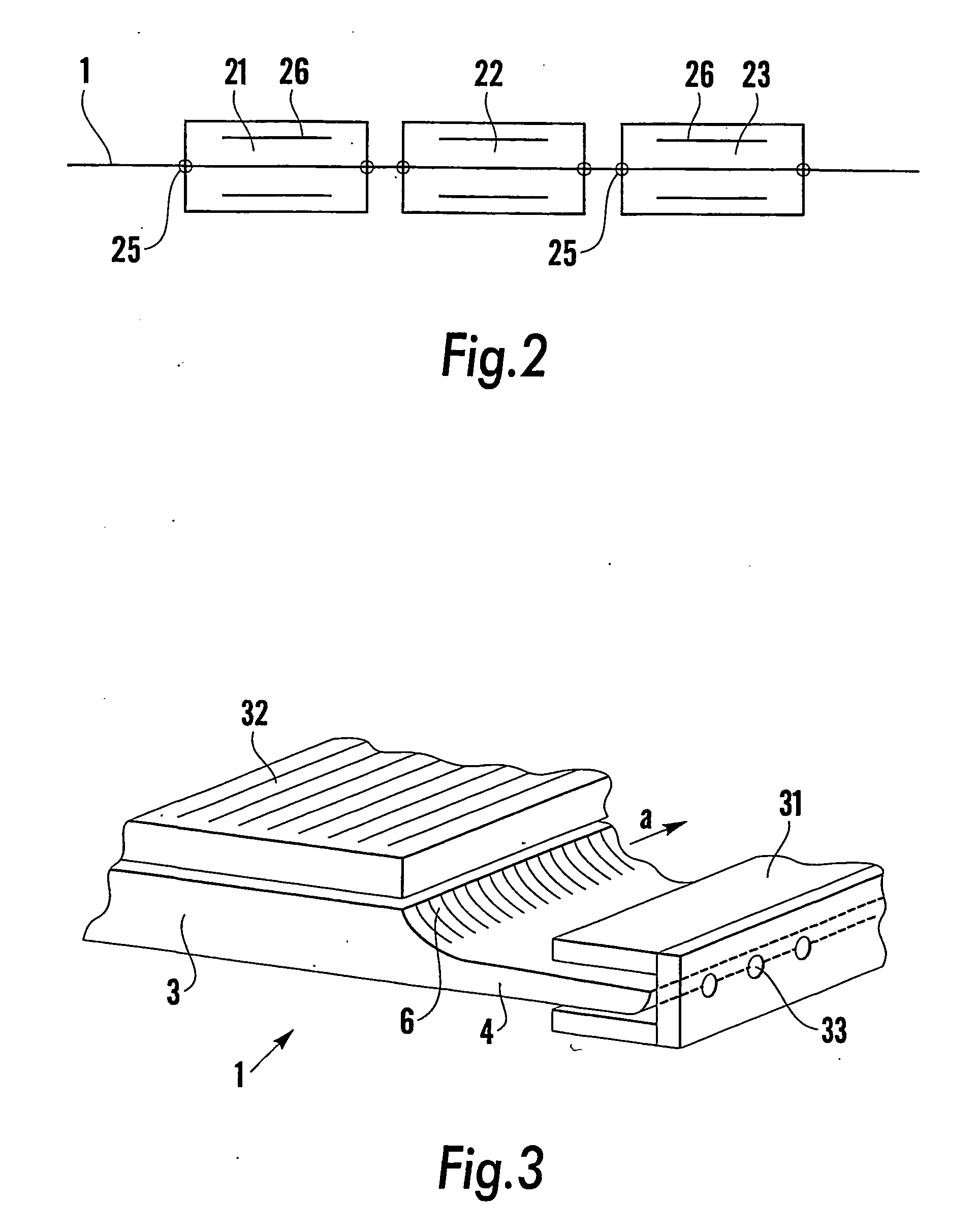Doctor or coater blade and method in connection with its manufacturing
a technology manufacturing method, which is applied in the field of doctor or coater blade, can solve the problems of increasing the problem of roll wear, arising, and not solving the roll wear problem, so as to achieve good abrasion resistance, increase wear, and good abrasion resistance
- Summary
- Abstract
- Description
- Claims
- Application Information
AI Technical Summary
Benefits of technology
Problems solved by technology
Method used
Image
Examples
Embodiment Construction
[0034] In the following, there is exemplified in table 1 a number of different conceivable variants of electrolytically coated blade according to the invention. By front part is meant the wear section and reinforcement section, the front part of the underneath side extending all the way to and including the reinforcement section which is arranged on the top side. By "Ni" is meant a nickel coating which has been created by aid of electrolytic nickel coating according to the description above. The coating layers used have been numbered so that layer 1 is the layer closest to the blade. By the designations is meant:
[0035] A Ni comprising abrasion resistant particles
[0036] L Ni comprising lubricating particles
[0037] T Ni comprising additives of the type Teflon / PTFE
[0038] AL Ni comprising both abrasion resistant and lubricating particles
[0039] W Ni without any additives
1 TABLE 1 Variant 1 2 3 4 5 6 7 8 Underneath side: Front part, layer 1 A A A L L L L L Front part, layer 2 L AL L A A A ...
PUM
| Property | Measurement | Unit |
|---|---|---|
| Angle | aaaaa | aaaaa |
| Fraction | aaaaa | aaaaa |
| Fraction | aaaaa | aaaaa |
Abstract
Description
Claims
Application Information
 Login to View More
Login to View More - R&D
- Intellectual Property
- Life Sciences
- Materials
- Tech Scout
- Unparalleled Data Quality
- Higher Quality Content
- 60% Fewer Hallucinations
Browse by: Latest US Patents, China's latest patents, Technical Efficacy Thesaurus, Application Domain, Technology Topic, Popular Technical Reports.
© 2025 PatSnap. All rights reserved.Legal|Privacy policy|Modern Slavery Act Transparency Statement|Sitemap|About US| Contact US: help@patsnap.com



